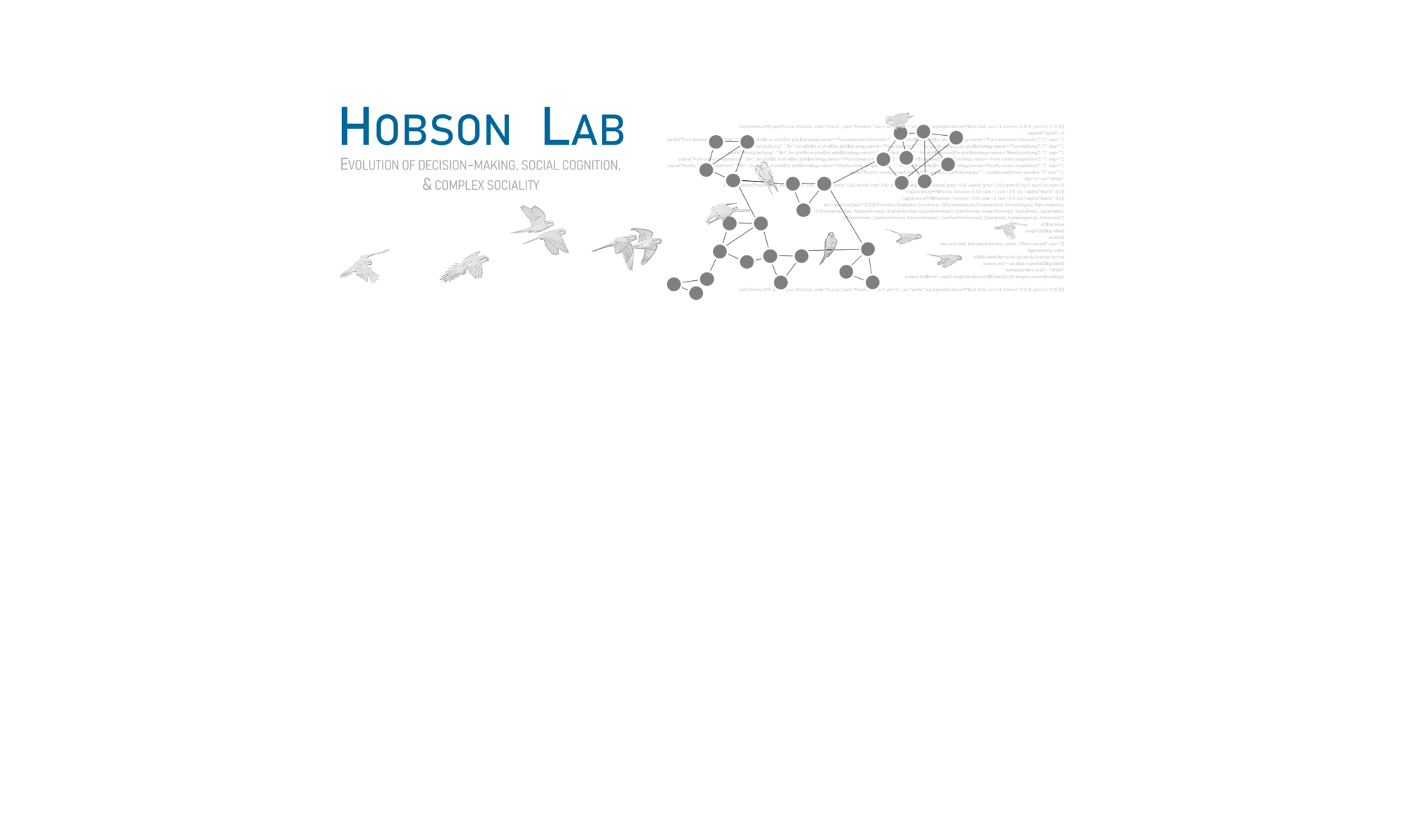I was invited to contribute to a new comparative psychology textbook, and roped one of my favorite collaborators into writing a chapter together. The book is now out! It’s available here.
In our chapter, Gerry and I wrote about how cooperation and conflict are really two sides of the same coin, and tend to be much more similar than many initially appreciate. We talk about each of our perspectives and the way we’ve approached studying our systems (vampire bats and monk parakeets) and then conclude with what more could be learned by using an integrated cross-disciplinary approach.
Here’s an excerpt from our chapter: “We, the authors, view social complexity using the complementary lenses that focus on cooperation (Carter Lab) and conflict (Hobson Lab). In this chapter, we use the themes of cooperation and conflict to illustrate how individual behaviors, pairwise relationships, and group dynamics can lead to the emergence of different structural features.”
Table of Contents
Part 1. Foundations
Introduction to Handbook
1. Historical Perspectives on Comparative Psychology and Related Fields: Gordon M. Burghardt and Lee C. Drickamer
2. Behaviourism: Past and Present: Gonzalo P. Urcelay and Joaquín M. Alfei
3. On strengths and limitations of field, semi-natural captive, and laboratory study settings: George W. Uetz, David L. Clark and Brent Stoffer
4. Ontogeny of Behavior: Sébastien Derégnaucourt and Patrizia d’Ettorre
5. Sensation, Perception, and Attention: Jessica L. Yorzinski and Will Whitham
6. Motivation and Emotion: Jerry Hogan
7. Comparative Cognition: Mary C. Olmstead and Valerie A. Kuhlmeier
8. Cognitive Ecology: Julie Morand-Ferron
Part 2. Behavioral Systems
9. Habitat Selection: Yamil E. Di Blanco and Mario S. Di Bitetti
10. Where, what and with whom to eat: towards an integrative study of foraging behaviour: Mathieu Lihoreau and Tamara Gómez-Moracho
11. Causal factors in the study of vigilance: Guy Beauchamp
12. Communication: Eleanor Caves, Patrick Green and Melissa Hughes
13. Intraspecific Aggression and Social Dominance: Christine M. Drea and Nicholas M. Grebe
14. Mating Behaviour: Patricia A. Gowaty
15. Parental Behaviour: Juana Luis and Luis O. Romero-Morales
16. Play behavior: a comparative perspective: Elisabetta Palagi and Sergio Pellis
Part 3. Complexities and Interactions
17. Sociality and Cooperation: Amanda R. Ridley
18. Cultural Behaviour in Cetaceans: Alex South, Ellen C. Garland and Luke Rendell
19. Tool Use: Akane Nagano
20. Bridging the gap between human language and animal vocal communication: Sabrina Engesser and Simon William Townsend
21. Reasoning: Valérie Dufour
22. Deception in Animal Communication: Tom Flower
23. Evolutionary behavioural ecology perspectives on personality in non-human animals: Niels J. Dingemanse and Denis Réale
24. Social Contextual Influences on Behaviour: Todd M. Freeberg and Brittany A. Coppinger
25. Network approaches to understanding social organization and complexity: Elizabeth A. Hobson and Gerald G. Carter
26. Changing Ideas About Mating Systems: Nancy G. Solomon and Brian Keane
27. Human mate choice: Jan Havlíček, Zuzana Štěrbová and Zsófia Csajbók
28. Bridging the gap: human-animal comparisons





